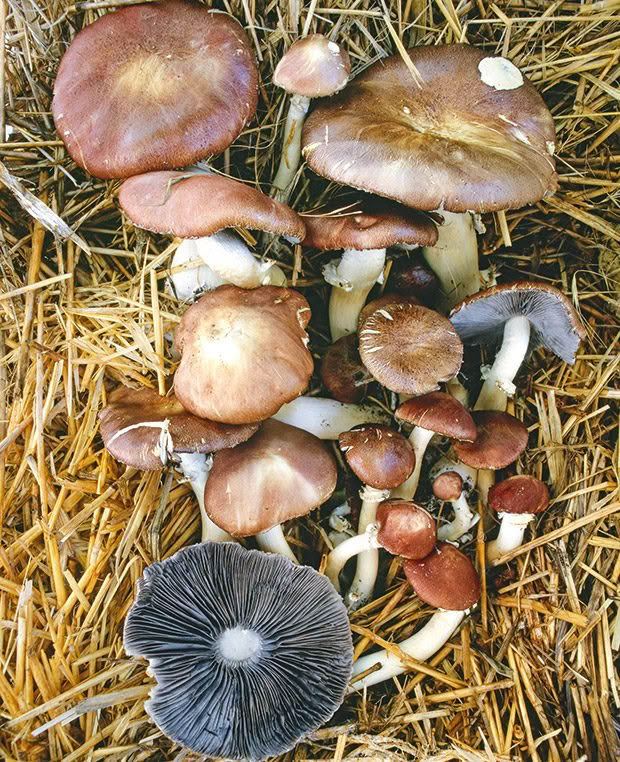How to grow mushrooms at home (yes, it’s easier than you might think)

Growing mushrooms in your backyard does double-duty – they provide a healthy, sustainable food source while improving the soil.
Growing mushrooms in your backyard does double-duty – they provide a healthy, sustainable food source while improving the soil. Fungi help break down organic matter into nutrients that plants can use, and their mycorrhizal filaments produce compounds that ‘glue’ soil particles together, improving soil structure and porosity. Growing them is also easier than you might think.
QUICK FACTS
Best grown from mushroom spawn
Best time to plant: Autumn and spring
Space: Spawn is sprinkled onto woodchip surface
Type: Mushrooms are the fruiting body of a fungus typically produced above ground. Those mushrooms with gills on the underside of their caps are members of the order Agaricales, or gilled mushrooms.
LOCATION, LOCATION, LOCATION
Think about where mushrooms grow naturally. Mostly, it’s in woodsy, moist, semi-dark areas – think of the oyster mushroom Pleurotus pulmonarius and the native mushroom Pleurotus parsonsiae, aka velvet oyster. But some species, such as King Stropharia (Stropharia rugosoannulata), aka wine cap stropharia, will tolerate full sun. These are excellent for beginners, as they are relatively robust.
When setting up a bed, pick a mushroom variety and mimic its natural growing conditions. If the mushroom likes shade, select a spot under trees, shrubs or tall flowers. If space is limited, try growing them beneath the rambling canopy of pumpkin or kūmara leaves.
MAKE THEM A BED
Create a raised bed to keep mushrooms contained, and for easy harvest. First, rake and smooth the area, removing all rocks and debris. Add a 5cm layer of fresh, untreated hardwood wood chips (not bark). If the wood chips have been treated to prevent rot or with a dye to change their colour, it may impede mushroom growth.

Wine cap or King Stropharia mushrooms.
Now, add a layer of mushroom spawn – a substance inoculated with mycelium, which is needed to grow mushrooms. In other words, it’s the mushrooms’ ‘seeds’. Mushroom spawn can be bought from speciality online growers. Ideally, you need about 2kg per square metre. Sprinkle the spawn over the wood chips, then add more wood chips – about 10-15cm thick. Create three layers of wood chips and spawn in each bed. The spawn will use the wood chips as food, giving them the fuel to produce mushrooms.
TUCK THEM UP AND THEN WATER
Apply a 5cm layer of straw over the top of the bed to act as insulation, keeping the bed cool in the summer and warm in winter. Next, saturate the straw and wood chips with water, ensuring it soaks through all layers down to soil level. The mushroom bed will need to be watered regularly, so creating it near a water source will make maintenance easier.
Mushrooms grow naturally in moist areas, so the worst thing you can do for your bed is let it get parched. Direct sunlight will quickly dry it out during late summer and early autumn, so unless you have selected a naturally shady location, top the bed with a shade cloth.
TLC AS YOU WATCH THEM GROW
Maintenance is easy. Just water regularly (except during times of rain) so the spawn remains moist. It may take a few months for your wine cap mushrooms to be visible above the straw and wood chips (oyster mushrooms grow much quicker).
After two months, you can check the development by digging up a small section. You should see white string-like filaments. These are the mycelium of the spawn spreading and eating the wood chips and straw.
HARVEST AT THE RIGHT TIME
Gently pull up the mushrooms just before the caps break open. If the caps are allowed to develop fully, the mushrooms will decay rapidly, and insects will overtake the bed.
KITS FOR FUNGI FANS
If you don’t have outdoor space, try an indoor mushroom kit for cultivating fresh mushrooms. Several ready-to-use kits require only water to get the fungi growing.
MORE HERE
This couple’s gourmet mushroom business is reinventing the fungi
How shiitake happens: 7 reasons why beginners have problems growing this popular fungi
 This article first appeared in Nadia: A Seasonal Journal Magazine.
This article first appeared in Nadia: A Seasonal Journal Magazine.

